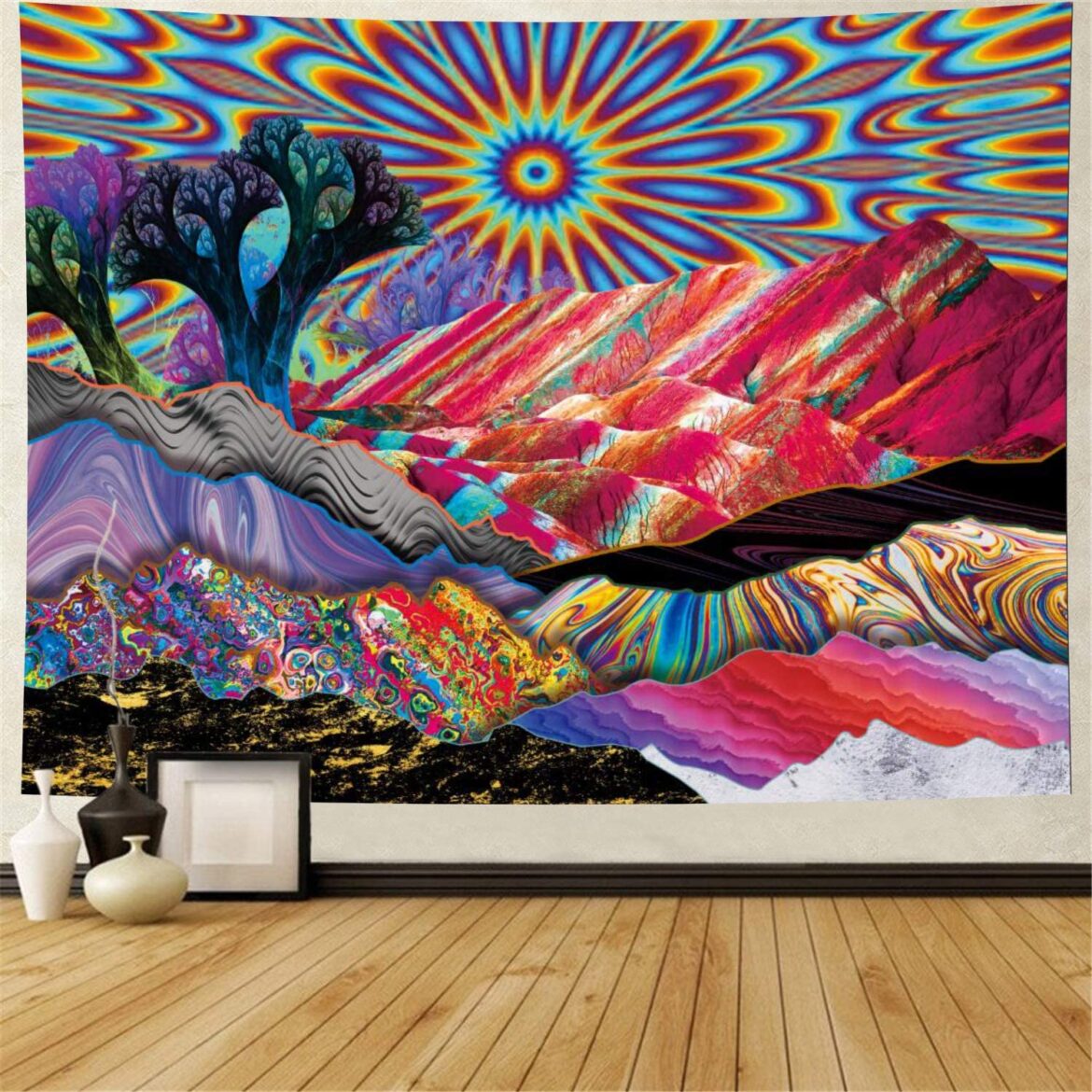In Europe, the incredible time of tapestry weaving ran from the second 50% of the fourteenth century to the furthest limit of the eighteenth century. This period is most popular for the creation of wall-hangings woven in this procedure, which we by and large allude to as tapestries. Tapestries were possessed by the tip-top and used to adorn both private and public spaces. Henry VIII is recorded as having 2,000 tapestries hanging in his different royal residences.
Enormous tapestries added an energetic tone to a room. They kept out drafts and gave both amusement and food to thoroughly considered their sensational portrayal of stories from the Bible, folklore and the works of art, or their noteworthy depiction of elegant life. They were incredibly exorbitant to deliver thus served to exhibit their proprietor’s riches. In contrast to today, tapestries were not just static items, but rather were frequently moved up and moved between habitations. During the 1540s, King Francis I of France even appointed a lot of tapestries that replicated the wall beautification of his recently revamped Great Gallery at Fontainebleau Palace in the woven structure. This set could be moved up and moved to his different homes.
Materials and procedure
Fleece is the material that has been most generally utilized for tapestry weaving, customarily utilized for both the twist and weft strings. Just as being promptly accessible and simple to color, its regular quality and adaptability loan themselves well to tapestry weaving. Silk strings are at times utilized in the weft, notwithstanding fleece, to help make multifaceted subtleties and add profundity to the plan. Metal strings can likewise be utilized to add detail albeit because of their significant expense they are all the more generally found in little instances of tapestry, for example, a book of scriptures covers and totes as opposed to in enormous hangings.
A tapestry is made by weaving hued weft strings through plain twist strings. The twist strings are extended on a loom and go about as a framework for weavers to make an example with the hued weft strings. The key component of tapestry weaving is that the vast majority of the weft strings don’t run right over the twist. Rather the weft runs to and for over a particular section of the twist to make a little square of shading. This is known as an intermittent weft. Weavers develop squares of shading to make an example or picture.
During weaving the weft strings are whipped concealing the twist to make a weft-confronted material so the plan is noticeable on the front and the back. In more seasoned tapestries, the first tones are frequently more extraordinary on the back, which would have been shielded from presentation to light.
The Plan
Weavers generally work from a plan known as an animation. This is painted on fabric or paper at full scale and either joined to the loom or hung behind it. Generally, on a low-twist loom, the animation was put underneath the twists and the weaver needed to move these aside to follow the plan in detail. As tapestries were woven from the back, if the weaver replicated the animation precisely, the completed tapestry, when seen from the front, was the opposite of the animation. High-twist looms empowered weavers to create a plan the correct path around. The animation was hung behind the weaver who utilized a mirror to see an impression of the animation. By working from the reflection, the completed tapestry was the right path around.
When a tapestry was done the animation could be re-utilized. A tapestry workshop that had a well-known arrangement of plans, which they could weave and sell a few times, was guaranteed of monetary achievement. A significant number of the busiest organizations utilized proficient specialists to create the full-size plans that the weavers recreated.
The Raphael Cartoons are instances of sixteenth-century tapestry plans. Dispatched by Pope Leo X, they were planned by the craftsman Raphael on the subject of the Acts of the Apostles. When the tapestries were woven the kid’s shows were sold on to different workshops. In 1623 they were purchased by the future King Charles I for use at the tapestry workshop in Mortlake and later went to the V&A, borrowed from HM Queen Elizabeth II.
Contemporary tapestry weavers proceed to investigate and re-characterize the cycle of tapestry, using new materials and structures. While innovative advances imply that tapestries would now be able to be woven precisely, numerous contemporary weavers actually utilize conventional hand-weaving strategies. Fiona Rutherford’s work ‘Go-Shoaki Shimasu’ (Let me present you) is a case of contemporary tapestry wherein the weaver has played with the structure to make a special kimono-formed piece.




